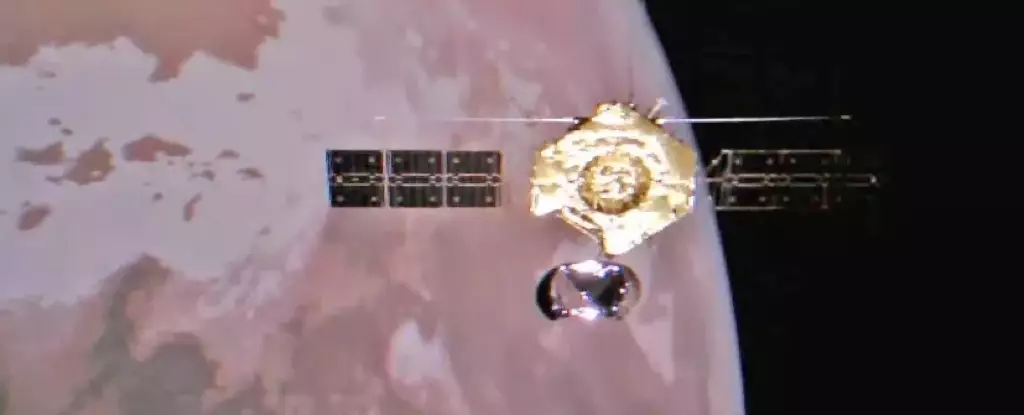China’s space program has been making significant progress in recent years, with the aim of becoming a major player in space exploration. As part of its strategy to rival NASA and establish itself as a superpower in space, China has set its sights on Mars. In a new study published in the journal Chinese Science Bulletin, Chinese scientists have announced the development of a new numerical model to simulate the atmospheric environment of Mars, which will support the country’s upcoming mission to return samples of Martian soil and rock to Earth.
China’s space agency, the China National Space Administration (CNSA), is planning to send crewed missions to Mars in the next decade. To prepare for this ambitious endeavor, China is set to return samples of Martian soil and rock to Earth, a mission known as Tianwen-3. This mission, which is scheduled for launch in 2028, will consist of a pair of launches and is expected to bring back samples in July 2031. The development of a reliable atmospheric model for Mars is crucial in ensuring the success of this mission.
The Chinese scientists involved in the study have developed a new numerical model called the Global Open Planetary atmospheric model for Mars (GoPlanet-Mars or GoMars). This model aims to simulate the atmospheric environment of Mars in order to provide crucial research support for the Tianwen-3 mission. The research team built the GoMars model based on three critical cycles of the Martian atmosphere: dust, water, and carbon dioxide. They tested the model using a dataset called OpenMARS, which provides global Martian weather information from 1999 to 2015, as well as observations from China’s Zhurong rover and NASA’s Viking 1 and 2 landers.
With an increasing number of robotic and crewed missions planned for Mars, the demand for accurate weather forecasts on the planet is growing. The GoMars model developed by the Chinese scientists can provide valuable meteorological data to help researchers understand the atmospheric conditions around potential landing sites. This information is essential for mission planning, as dust storms and extreme weather conditions can pose significant challenges for spacecraft and rovers. By simulating the meteorological conditions on Mars, scientists can design vehicles and select appropriate landing sites to improve the chances of mission success.
Apart from its direct support for the Tianwen-3 mission, the GoMars model also has broader applications in space exploration. The model can be used to create virtual reality simulations of Mars, aiding in the design of vehicles and the selection of landing sites for future missions. The scarcity of observation data for Mars makes such simulations invaluable in reducing the uncertainty associated with mission planning. By incorporating the GoMars model with future observations, researchers can make more informed decisions and potentially overcome the challenges presented by Martian weather.
The development of accurate atmospheric models for Mars is crucial for future missions to the planet. Dust storms and weather conditions can impact various phases of a mission, including entry, descent, and landing (EDL), surface operations, and even the ascent phase for sample return missions. By simulating the atmospheric environment of Mars, the GoMars model can help scientists analyze and mitigate the risks associated with these factors. It can also provide valuable data for the design of materials and equipment suitable for extreme Martian conditions.
China’s ambitious plans for Mars come at a time when multiple countries, including the United States, have set their sights on exploring the Red Planet. NASA and the European Space Agency (ESA) are also planning a joint mission called Mars Sample Return (MSR), which aims to retrieve samples collected by NASA’s Perseverance rover. This mission, scheduled for launch in 2033, aligns with NASA’s first crewed mission to Mars. The competition between nations to establish a presence on Mars signifies the beginning of a new era in space exploration, extending beyond the Moon and into the depths of our neighboring planet.
China’s development of the GoMars model represents a significant step forward in its quest to explore Mars. By simulating the atmospheric environment of the planet, this model can provide valuable data for mission planning, improve the chances of success, and contribute to the broader understanding of Martian weather patterns. As China continues to invest in its space program and compete with NASA and other space agencies, its ambitious plans for Mars highlight the increasingly intense global competition to unlock the secrets of our solar system’s most enigmatic neighbor.


Leave a Reply